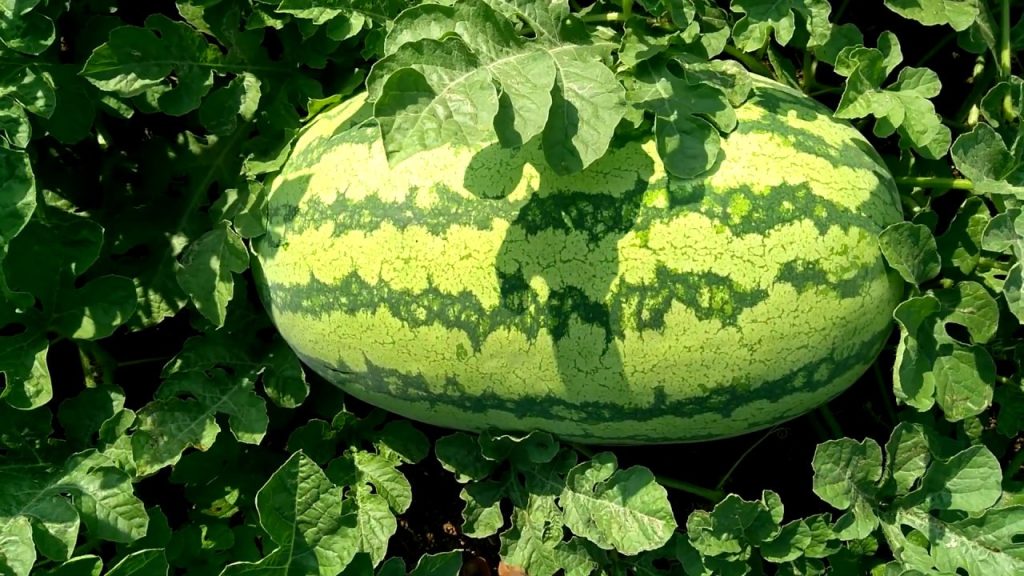
Seeded Watermelons
Table of Contents
Grow Seeded Watermelons: A Step-by-Step Guide
Seeded watermelons grown in your own garden are a fun experience, particularly for U.S. gardeners. Not only are they tasty and thirst-quenching, but they also provide the simple enjoyment of eating fruit with seeds. Irrespective of whether you live in California’s sunny lands or Florida’s humid climates, the following guide offers step-by-step instructions for growing healthy, seeded’s watermelons.
“Alhuda Job Bank in Multan connects you with a wide range of career opportunities across various sectors including education, healthcare, manufacturing, retail, and more. Explore job openings without any registration fees, ensuring a straightforward path to your next career move. Join us to discover your potential in Multan’s vibrant job market.”
Understanding Seeded Watermelons
Seeded watermelons, unlike their seedless counterparts, contain mature seeds that are edible and contribute to the fruit’s natural reproduction process. They come in various varieties, each with unique flavors and sizes. Popular types include ‘Crimson Sweet’, ‘Jubilee’, and ‘Sugar Baby’. These varieties are well-suited for cultivation across different climates in the U.S.
Selecting the Right Variety
Choosing the appropriate watermelon variety is crucial for a successful harvest. Consider factors such as your local climate, soil type, and the amount of space available. For instance, ‘Crimson Sweet’ thrives in warm climates and is known for its sweet, red flesh. ‘Sugar Baby’ is a smaller variety, ideal for limited spaces or container gardening. Researching and selecting a variety that aligns with your growing conditions will set the foundation for a fruitful harvest.
Preparing the Planting Site
Watermelons require a sunny location with well-drained, loamy soil. Before planting, amend the soil with compost or well-rotted manure to enhance fertility. Ensure the soil pH is between 6.0 and 6.8 for optimal growth. If your soil is heavy clay, consider creating raised beds or mounds to improve drainage and soil warmth.
Planting Watermelon Seeds
In hot climates, seed watermelon directly into the garden 1–2 weeks following the last frost date when the soil temperature has reached 65°F (18°C) or more. In cool areas, sow seeds indoors 2–3 weeks prior to the last predicted frost and transplant outside when soil has warmed.
Sow seeds ½ to 1 inch deep in hills or rows, and space 2–3 feet apart. When planting in rows, plant rows 6–8 feet apart to provide enough space for vine development.
Taking Care of Watermelon Plants
Watermelons are prolific eaters and need regular attention during the growing season. Water thoroughly, supplying 1–2 inches of water weekly, and use a balanced fertilizer to aid growth. Mulch near the base of the plants to keep the soil moist and prevent weeds. Once vines emerge, row covers may be used to cover young plants from pests, then remove after the onset of flowering in order to permit pollinators.
Pollination and Fruit Development
Pollination is necessary for fruiting in seeded watermelons. Bees and other insects move pollen from the male to female flowers, leading to fruit formation. Where there is low pollinator activity, hand-pollination may be necessary through a small brush to move pollen between flowers.
Harvesting Seeded Watermelons
Watermelons typically reach maturity 70–100 days after planting, depending on the variety. To determine ripeness, look for signs such as a dried tendril near the fruit, a dull skin appearance, and a change in the rind color on the ground side. Thumping the melon should produce a hollow sound.
Cut the stem 2 inches from the fruit using a sharp knife or pruning shears to minimize damaging the vine. Toss the melons gently to avoid bruising. Store harvested watermelons in a dry, cooler location. Watermelons can be stored at room temperature for 10 days or refrigerated for 2 weeks.
Storing and Saving Seeds
To store seeds for planting, scoop out the seeds from the melon and wash them in cold water to rinse off the pulp. Lay out the seeds in a single layer on a paper towel or screen and let them air dry fully in a well-ventilated location. After drying, store the seeds in a cool, dry location in an airtight container. Seeds stored in this manner will stay alive for many years.
Troubleshooting Common Issues
Growing seeded watermelons may be susceptible to problems like pest infestations, disease, and environmental stress. Check plants regularly for the presence of pests like aphids or beetles and diseases like powdery mildew. Integrated pest management approaches, such as the introduction of natural predators and organic pesticides, can minimize these problems. Proper spacing and adequate space between plants eliminate the possibility of fungal disease.
Grow Seeded Watermelons: A Step-by-Step Guide
Watermelons are summer’s sweet nectar, and when cultivated properly, seeded watermelons yield unparalleled flavor, texture, and sentiment. Seedless watermelons do not compare to seeded’s watermelons in terms of taste and natural growth. This complete guide is uniquely designed for urban gardeners in American cities such as Los Angeles, Chicago, Houston, and New York—city gardeners who desire fresh, homegrown crops even in small areas or raised beds.

Why Seeded Watermelons Still Matter
In the age of convenience, seedless fruits dominate grocery stores. However, seeded watermelons remain a preferred choice for many due to their rich flavor and traditional growing process. Their seeds also allow gardeners to save and regrow plants, making them a more sustainable option. Whether you’re planting in a city backyard or a community garden, choosing seeded varieties offers the added benefit of full genetic integrity.
Picking the Appropriate Seeded Watermelon for City Climates
US cities cover a broad spectrum of growing zones. From arid and warm in Phoenix to humid and temperate in Atlanta, it is crucial to use a watermelon variety that is compatible with your area. Seeded varieties like ‘Crimson Sweet,’ ‘Jubilee,’ and ‘Charleston Gray’ are popular in most city environments when provided with the right amount of sun and attention. These varieties have shown resilience in pest and disease resistance and are suitable for both first-time and seasoned urban gardeners.
Achieving the Soil and Sun Conditions Right
Seeded watermelons require full sun and well-draining, fertile soil to thrive. If you’re growing in a container or raised bed, plant high-quality compost-enriched soil with a pH ranging from 6.0 to 6.8. Urban soils can become compacted or contaminated at times, so raised beds or grow bags are a good choice for safe growing. Plant your area where the plants will get at least 8 hours of sunlight every day.
Beginning from Seed in Containers or Indoors
For urban gardeners with abbreviated growing seasons, growing seeded watermelons indoors provides a good head start. Initiate the germination procedure 3 to 4 weeks prior to the last projected frost. Utilize biodegradable pots to avoid transplant shock. After the seedlings become strong and the risk of frost has passed, transplant them into your garden bed or balcony planters. Seeded watermelon root systems require room to radiate, so larger containers are preferable.
Watering and Fertilizing for Maximum Growth
Even moisture is most important in raising healthy seeded watermelons, particularly during fruiting and flowering. Drip irrigation is ideal in water conservation and suppression of fungal diseases in wet cities. Use balanced fertilizer, particularly one that is high in phosphorus and potassium, to promote flowering and fruiting. Over-fertilization with nitrogen, however, will cause more vines with minimal fruits, so balancing is important.
Promoting Pollination in Urban Areas
Pollination is critical to bring fruit on your seeded watermelons. Bees are the natural pollinators, but where population densities are high in urban environments, they may be less plentiful. Entice pollinators by planting flowers for bees around your plants, or pollinate manually using a small brush to carry pollen from the male flowers to the female flowers. This does make a remarkable difference in fruit yield, particularly in balcony or rooftop gardens.
Identifying When Seeded Watermelons Are Ready to Pick
Picking at the proper time guarantees your seeded watermelons are sweet and ripe. These indicators of readiness are a yellow ground spot, a dried tendril close to the stem, and a dull, hollow ring when tapped. Store them at room temperature or in the fridge for extended shelf life after picking. Eating them fresh provides the best flavor and hydration benefits on summer heatwaves in American cities.
Preserving Seeds for Future Seasons
One of the greatest advantages of growing seeded watermelons is the ability to save seeds. After enjoying your watermelon, clean and dry the seeds thoroughly. Store them in an airtight container in a cool, dry place. Properly stored seeds can remain viable for up to five years, making this method cost-effective for city gardeners who plan to grow annually.
Addressing Common Urban Growing Challenges
Urban gardening is different in that it has special challenges such as small area, pollution, or irregular weather. Seeded watermelons are versatile and robust once provided with the proper environment. Employing vertical growing techniques, windbreaks, and container gardening technology can offset urban stressors. Integrated pest management involving neem oil or natural predators protects your plants from artificial chemicals.
Climate Considerations Across U.S. Cities
Variations in U.S. regions present differing levels of challenging growing conditions. Southern cities such as Miami or Houston have heat and humidity that can provide aideal condition for seeded watermelons but are also conducive to attracting fungal diseases. Northern cities such as Chicago or Boston might necessitate indoor starting or greenhouse arrangements. On the West Coast, cities such as Los Angeles have long, dry summers that are perfect for continuous watermelon production.
How to Grow Seeded Watermelons: A Step-by-Step Guide
Seeded watermelons are enjoying a big comeback with home gardeners, particularly in big U.S. cities where the demand for homegrown, flavorful food is on the rise. In contrast to seedless varieties, seeded’s watermelons are natural-tasting, easy to grow, and accessible if you know the right steps. This guide will ensure urban gardeners and suburban gardeners alike learn how to grow seeded’s watermelons efficiently.
What Makes Seeded Watermelons Special
Seeded watermelons are unique due to their full-bodied sweetness, firm texture, and natural growth cycle. They have fully formed seeds, which makes them more genetically stable and more ideal for seed saving. For consumers with health concerns as well as gardeners wanting to have sustainable crops, seeded watermelons provide a significant alternative. Many think they taste deeper and more real in comparison to their seedless variety.
Best Watermelon Types for U.S. Gardeners
Raised seeded watermelons in an urban garden involve selecting the appropriate cultivar for your location. Cultivars like ‘Crimson Sweet’ are excellent for warm climates like those of Southern cities like Dallas, Phoenix, or Miami. Northeastern cities like Philadelphia or Boston can use earlier-maturing cultivars. Urban gardeners along coastal cities like San Diego or Charleston take advantage of long seasons allowing larger watermelon varieties. Attaching your melon to your area will enhance success and minimize growing stress.
The Optimal Soil Conditions for Watermelon Success
Watermelons grow best in sandy loamy, well-draining soil that contains a lot of organic matter. The urban gardener may have the challenge of compact soil or raised beds with poor fertility, which can be enhanced by incorporating compost or aged manure. A 6.0 to 6.8 range for the soil pH provides seeded watermelons with their best opportunity for rapid growth. Preparation of soil before sowing is extremely important to realize deep root systems that provide for maximum fruit production.
Sunlight and Heat: An Essential Pair
Sunlight is needed to ripen sweet, seeded watermelons. Even most varieties need a minimum of 8 to 10 hours of direct sun per day. In urban areas with limited space, rooftop gardens or south-facing balconies work best for this purpose. The heat also facilitates the formation of sugars in the fruit, which means cities with hot, dry summers such as Las Vegas or Sacramento provide best environments for big, juicy melons.
Conclusion
Raising seeded watermelons is a rewarding experience that yields flavorful dividends. From preparing the soil to picking, every step is an opportunity to tune in to nature—even in the middle of a metropolis. The thrill of sinking your teeth into a sun-warmed watermelon that you raised yourself can’t be beat, and saving seeds so you can continue growing season after season makes it a sustainable pleasure.
Growing seeded watermelons in your backyard is a rewarding experience that provides tasty, homegrown watermelons. By choosing the proper variety, getting the soil in good condition, giving proper care consistently, and picking at the right time, you can have a successful watermelon crop. Both an experienced and new gardener can grow healthy, seeded watermelons in their U.S. garden by following these steps.
FAQ:-
What Are the Advantages of Consuming Seeded Watermelons?
Seeded watermelons have numerous nutritional and health advantages that are not commonly known. Since seeded watermelons are less genetically altered than seedless watermelons, they are more natural and typically higher in nutrients. The seeds of seeded watermelons are digestible and rich in protein, magnesium, and healthy fats. Seeded watermelons consumption may aid digestion, hydration, and cardiac health. Also, seeded watermelons will have fewer genetic alterations, so they are a superior option for those looking for more natural products. All in all, seeded watermelons are a refreshing, nutrient-rich fruit that will add variety to your summer diet.
Why Seeded Watermelons Are the Better Option Compared to Seedless Ones
When selecting the proper watermelon, seeded watermelons stand out for numerous reasons compared to seedless ones. First, seeded watermelons tend to taste better, with a deeper flavor from their natural cultivation. Also, seeded watermelons contain seeds that are full of important nutrients such as magnesium, zinc, and healthy fats. These nutrients can improve cardiovascular health, facilitate digestion, and impart long-lasting energy. Another important reason for choosing seeded watermelons is that they contain fewer genetic alterations than seedless watermelons, so they are a more natural option. Whether for taste or health, seeded watermelons are a leading choice for individuals looking for a natural, healthy alternative.
When Is the Best Time to Plant Seeded Watermelons?
Seeded watermelons need to be planted at the right time in order to maximize their growth and provide a great harvest. The optimal planting time for seeded watermelons is in the warmer season, generally late spring or early summer when the soil temperature will have at least reached 70°F (21°C). Seeded watermelons do well in direct sunlight and warm weather. It’s crucial to plant them following the last frost period and when nighttime temperatures remain above 50°F (10°C). By planting seeded watermelons at the best time, you can have a healthy and productive yield that will grow to its full size.
Where to Purchase Quality Seeded Watermelon Seeds
When looking for quality seeded watermelon seeds, you want to make sure to use good sources to make your plants as healthy as possible. Reputable gardening shops, whether online or in person, are great places to obtain seeded watermelon seeds. Online sites such as Seed Savers Exchange, Baker Creek Heirloom Seeds, and Burpee sell a selection of quality seeded watermelon seeds, frequently from organic or heirloom sources. Local garden shops also stock seeded watermelon seeds so you can support local businesses and guarantee the seeds will adapt to your regional growing conditions. Be sure to seek out trusted sellers that provide non-GMO, untreated seeded watermelon seeds to yield the best results.
How Do Seeded Watermelons Differ from Seedless Watermelons
When comparing seeded watermelons and seedless watermelons, there are a few key differences to note. Seeded watermelons tend to be perceived as being more natural because they are usually less altered in cultivation. Seeded watermelons are thought by many to have a sweeter, richer taste than seedless varieties. Furthermore, seeded watermelons are full of edible seeds that are rich in protein, magnesium, and healthy fats. Although seedless watermelons are more convenient, seeded watermelons provide nutrients and a more authentic eating experience. Seeded watermelons are an intelligent choice for those looking for a natural and nutrient-dense fruit.








